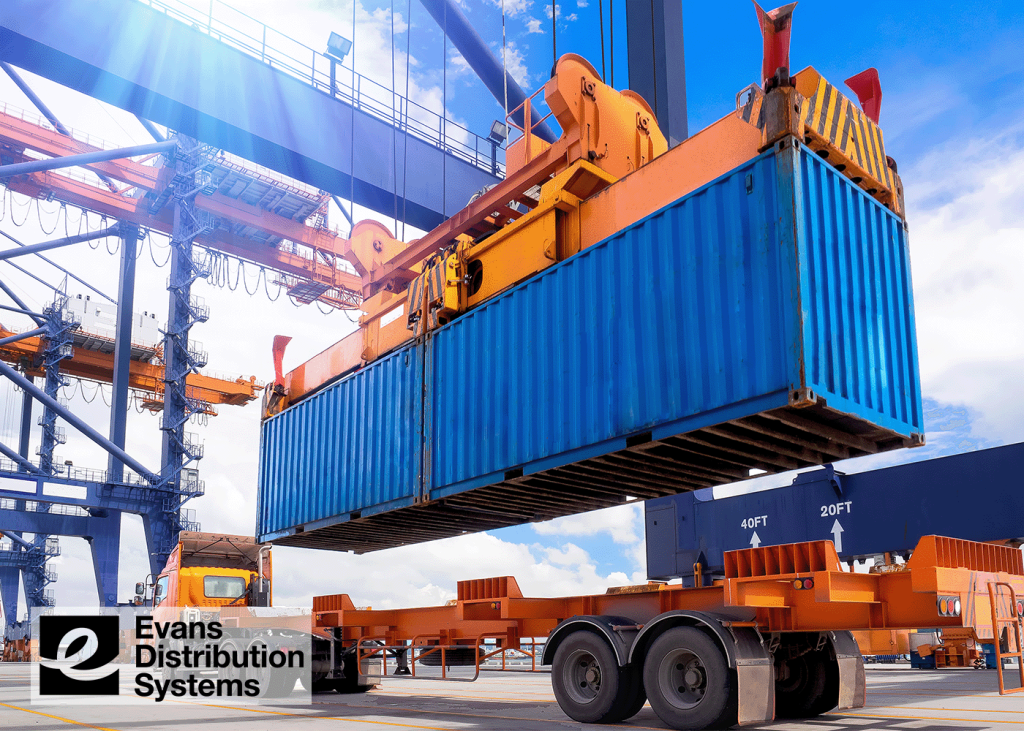Transloading refers to the process of transferring goods or cargo from one mode of transportation to another, such as ship to truck to rail. This service is usually performed by a distribution center or 3PL provider. Transloading offers many benefits including cost savings and improved transportation efficiency, but there are several challenges that companies may face when undertaking transloading operations. In this article we will discuss some of the roadblocks a transloading operation may face, as well as the best practices to overcome these challenges.

Logistics Coordination
Transloading requires a high level of coordination and synchronization between multiple parties. Scheduling between multiple modes of transportation can be a difficult task. When done improperly it can result in delays and a possible increase in handling costs, which slows down every step of the supply chain.
Open communication is required to prevent issues with logistics coordination. Establish a clear course of action and contact everyone who is involved in the transloading process. Once it’s confirmed that the shipment can be received and transportation is available, contact the shipper to finalize the paperwork.
Damages and Losses
When there are more steps in the supply chain, you run a higher risk of damaging or losing products during handling. The risk of damage also rises with a high volume of shipments. It’s difficult to eliminate product damage during the transloading process, but you will want to reduce that amount as much as possible.
To prevent damage and losses companies should establish standard operating procedures (SOPs) to ensure high quality service. These SOPs should include requirements for handling, storage, and transportation of goods. By establishing a relationship with a 3PL you can learn all about their processes and request company-specific SOPs.
Additional Handling Costs
Transloading can add additional handling costs to the supply chain. Labor that is required to load and unload a container is an added expense that needs to be considered. It’s also important to consider any specialty equipment, specific handling instructions, or temporary requirements to move the products. Any customizations or special requirements will result in a higher cost.
These handling costs need to be accounted for upfront, but often result in lower overall expenses. Shipping expenses can be reduced using transloading services by consolidating shipments, reducing storage fees, or switching to a cheaper form of transportation like rail. Although the additional handling brings a new expense, the overall cost is often still less.
Location and Capabilities
When deciding on a transloading partner, location is one of the biggest factors to consider. The optimal partner needs to be near transportation routes to reduce costs. They will also need to have various modes of transportation available to optimize those routes. Additionally, transloading is a service often used on imported products which may require the use of a Foreign Trade Zone or Bonded warehouse to receive the shipment.
Planning is the best practice when looking for a 3PL with specific requirements. If you have a product being imported from another country, research the 3PLs in proximity to the port or yard. Contacting industry organizations such as IWLA, AWI, or WERC can provide you with references to local 3PL providers. Once you find a provider that matches your requirements, contact them to make sure they have the capacity to help. This will help prevent demurrage fees.
Conclusion
Transloading is an effective and efficient way of moving products using multiple forms of transportation. By developing relationships with 3PLs and creating the necessary SOPs transloading can help expand a business into new markets. If your business is in need of transloading services, visit our “Detroit Transloading & Crossdocking” page for more information.
